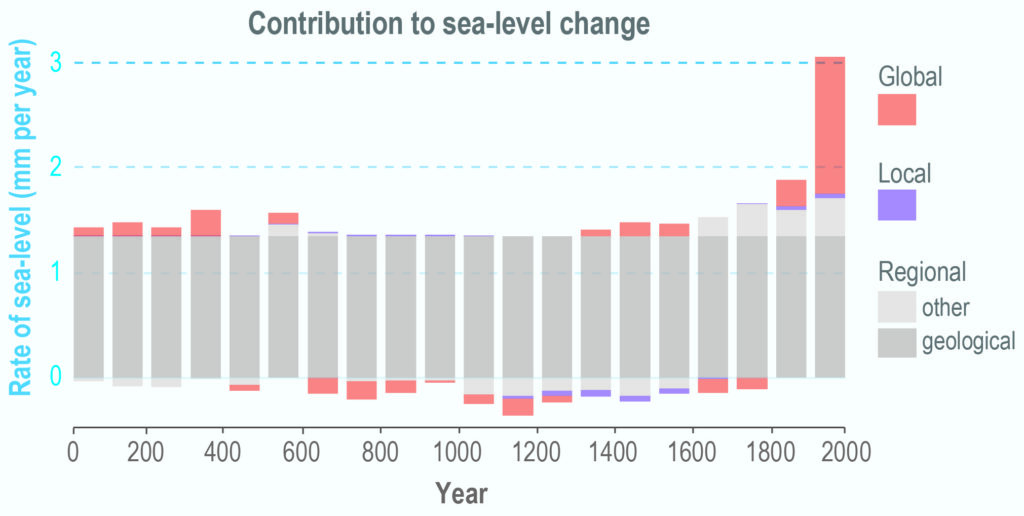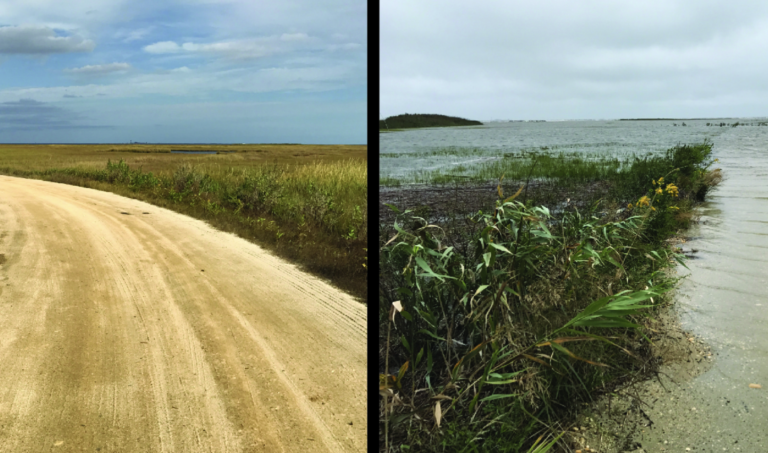A study led by Rutgers University in New Jersey, US, has revealed that the rate of sea-level rise from melting ice and warming oceans in the 20th century along much of the US Atlantic coast was the fastest in 2,000 years. The study also found that southern New Jersey had the fastest rates.
The study looked at the phenomena that contributed to sea-level change over 2,000 years at six sites along the coast in Connecticut, New York City, New Jersey and North Carolina. The study used a sea-level budget, which enhances understanding of the processes driving sea-level change. The processes are global, regional (including geological, such as land subsidence) and local, such as groundwater withdrawal.
The total rate of sea-level rise for each of the six sites in the 20th century (ranging from 2.6mm to 3.6mm per year, or about 1in to 1.4in per decade) was the fastest in 2,000 years. Southern New Jersey had the fastest rates over the 2,000-year period: 1.6mm a year (about 0.63in per decade) at Edwin B. Forsythe National Wildlife Refuge, Leeds Point, in Atlantic County, and 1.5mm a year (about 0.6in per decade) at Cape May Court House, Cape May County.

“Having a thorough understanding of sea-level change at sites over the long term is imperative for regional and local planning and responding to future sea-level rise,” said lead author Jennifer S Walker, a postdoctoral associate in the Department of Earth and Planetary Sciences in the School of Arts and Sciences at Rutgers University – New Brunswick. “By learning how different processes vary over time and contribute to sea-level change, we can more accurately estimate future contributions at specific sites.”
Most sea-level budget studies are global and limited to the 20th and 21st centuries. Rutgers-led researchers estimated sea-level budgets for longer time frames over 2,000 years. The goal was to better understand how the processes driving sea level have changed and could shape future change, and this sea-level budget method could be applied to other sites around the world.
Using a statistical model, scientists developed sea-level budgets for six sites, dividing sea-level records into global, regional and local components. They found that regional land subsidence – sinking of the land since the Laurentide ice sheet retreated thousands of years ago – dominates each site’s budget over the past 2,000 years. Other regional factors, such as ocean dynamics, and site-specific local processes, such as groundwater withdrawal that helps cause land to sink, contribute much less to each budget and vary over time and by location.
The full study can be found here: Common Era sea-level budgets along the U.S. Atlantic coast.



